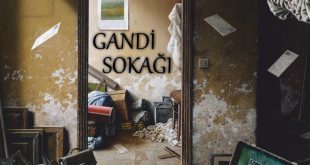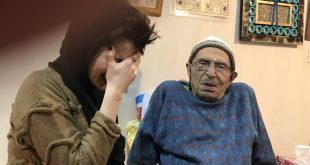
5 سال ِ پیش ، بهجت صدر را به آتش کشیدند و همان طور که خودش خواسته بود ، دفن اش نکردند ، مزاری ندارد تا بر سر ِ مزارش بروند و گُل و یادگاری بگذارند ، عکس بگیرند و نمایش بدهند . آرزو داشت، مرگش در آب باشد و چنین شد . در دریا سکته کرد و دار فانی را وداع گفت . او پیش تر از زنان ِ مشهور ِ زمان ِ خودش در شبکه های اجتماعی و آموزشکی و کار حضور پیدا کرد . یک دهه از ایران درودی که او نیز نقاش پیشگام ایرانی محسوب میشود زندگی کرد و کمتر کسی میداند که وی معلم نقاشی فروغ فرخ زاد بود و در زمینه ی دوبله نیز کار کرده است . از خصوصیات ِ وی ، نداشتن ِ فن بیان و سخنرانی ست . . . روشی که میشود با آن خود را مطرح کرد ، شاید به همین دلیل است که کمتر او را به عنوان نخستین زن ِ نقاش ایرانی که تحصیلات ِ اکادمیک دارد و برای این رشته بورس میگیرد و به خارج از کشور سفر میکند میشناسند! چون او اهل ِ حاشیه و مصاحبه و سوز و بریز هایی که مخصوص این رشته است نبود . در یک انزوا با تفکری که سر منشا و مبتکرش تنها خودش بود سر و کله میزد . کافی است به تابلو های او نگاه کنیم . قدرت ِ دستان ِ او را در ( برداشتن ِ رنگ ) میتوانیم ببینیم . به گفته ی خودش او رنگ روی بوم نمیگذارد او رنگ از بوم بر میدارد .
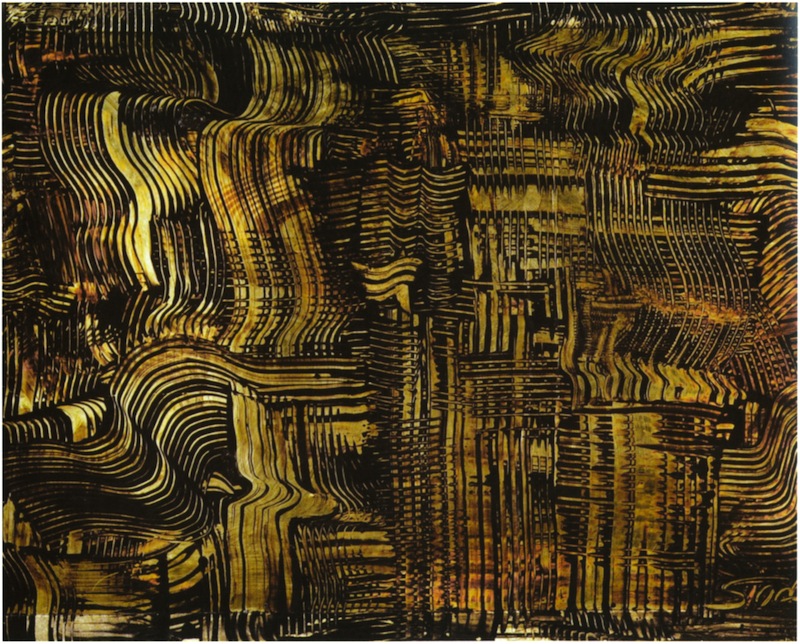
او نه تنها به عنوان ِ یک نقاش ، بلکه به عنوان ِ یک زن ِ نقاش ، به تنهایی در مقابل ِ دهن کجی های افراد کوته فکری که میخواستند کارهای وی را نقد کنند و توسر کار بزنند ایستاد . زیرا به حس اش و به کارش ایمان داشت . او در زمینه ی عکاسی ، کلاژ با عکس و آینه و کرکره و نقاشی مبدا بود و آثارش جزو پیشگامان محسوب میشود . به قول خودش روحی بی قرار داشت و مدام باید کار میکرد و از راکد بودن خوشش نمی آمد .
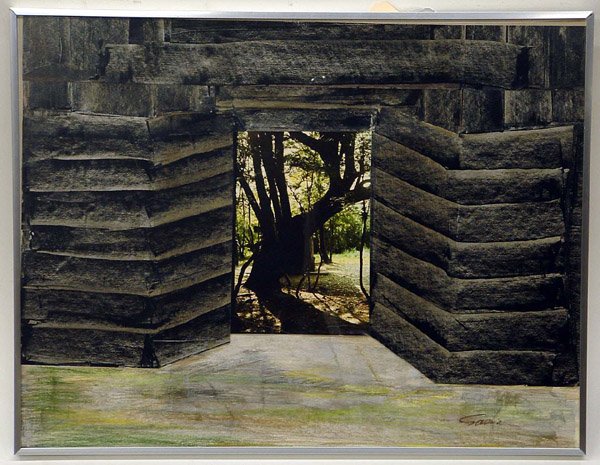
بینش ، حرکت ، تلخی و شور و زندگی در کارهای این هنرمند برجسته ی تاریخ کشورمان دیده میشود . باید یادمان باشد که او متولد 1303 میباشد . یعنی 90 سال ، نزدیک به یک قرن پیش متولد شده است . زمانی این عصیانگری ها را در داخل کشور و خارج از کشور انجام داده است که مادر بزرگ های ما ( که همزمان با وی بودند ) شاید حتی نمیتوانستند ریاضی یاد بگیرند یا در اجتماع حضور پیدا کنند و اصولا طبق سنتی که در ایران وجود داشت سواد و دانش یک زن اگر از متوسطه بیشتر میشد دانشمند بود . پس ایشان در زمان خود ، به عنوان یک زن ، به شدت با سختی های اجتماع و برخورد های اجتماع رو به رو بودند . این را همه میدانند که تا به امروز شرایط نامساوی کار و حقوق برای زن ها همواره در قانون و سنت ایرانی جماعت وجود داشته و کسی که در کسوت هنرمند باشد و با جامعه ای سنتی و مردانه بخواهد دست و پنجه نرم کند باید شهامت داشته باشد . به خصوص اینکه این مقاومت یک تنه باشد . اجتماع ِ ما در مقابل ِ ورزیدگی زنان همیشه جبهه گرفته . امروز که این نوشته ها را در این وبلاگ مینویسم حرف از تفکیک جنسیت میشود ، صحبت ِ بهداشت ِ روانی و کار درمانی در اجتماع نیست ، امروز وضعیت به مراتب از آن دوره ها بحرانی تز است چون در مقابل ِ یک دگماتیسم در این قرن باید مجدد مقابله کرد . اتها فرق آن گذشت زمان است و گمان ِ تحصیل و دانش اندوزی سردمداران ، عدم ِ حضور زن در جامعه . . . به مراتب ،بیشتر شدن دلنگرانی ها . . . بهجت صدر در گفته های خودش یاد میکند که در ضمن ِ تحصیل دانشکده وسایل نقاشی و بوم و رنگ در اختیار دانشجو ها قرار میداده است . اتفاقی که تا به امروز برای هم نسلان من رخ نداده با وجود شعار ِ ( استقلال ) پیش میرویم ظاهرا یک کج فهمی ریشه ای هنوز در ذهن ِ خانواده های ما و خانواده های آقایان وجود دارد و هرگز به اتفاق های هنری و آدم های اهل اش توجه نمیشود .
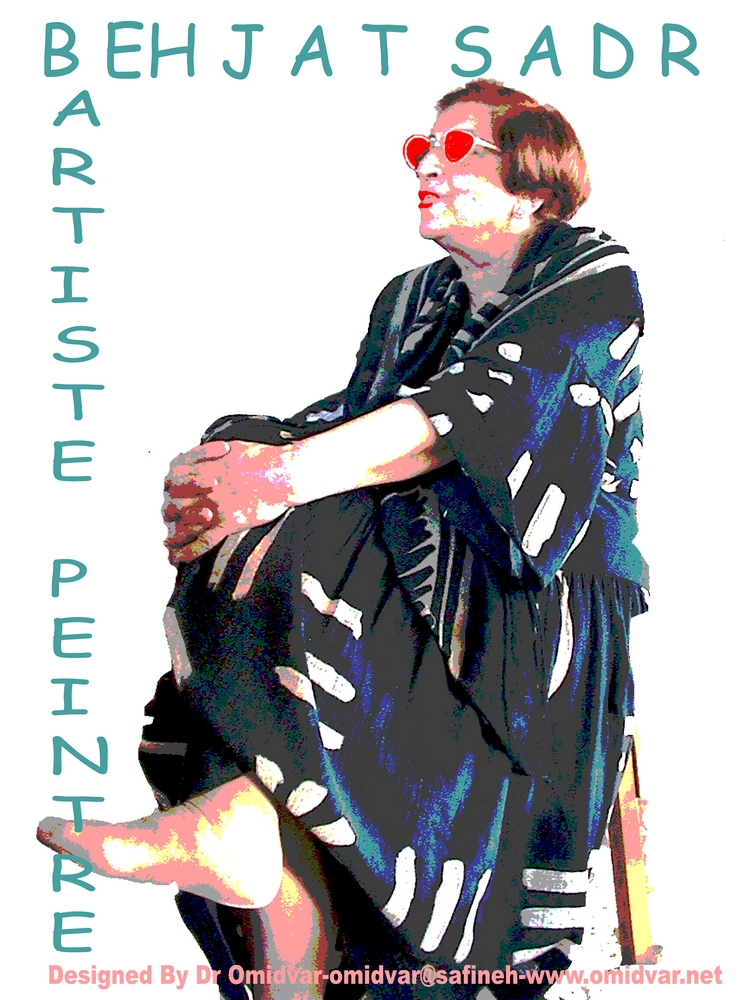
بهجت صدر به اشیا ، طبیعت ، درخت و بافت به عنوان ِ یک فیگور نگاه میکرد ، عمچنین از پنکه ، کرکره و اشیا در بافت نقاشی هایش رد و نشان باقی مانده است . منزل وی به عنوان یک موزه و کارهایش از موزه ها دزدیده شده است . وی اهل ِ تملق و جمع کردن ِ یک عده در اطراف خودش نبود و ساکت خاموش شد . سالها با سرطان سینه مبارزه کرد و با روحی با نشاط به زندگی خود ادامه داد . او توانست سرطان را شکست دهد .
وقتی زن جوانی بود و آثارش در نمایشگاه مهمی شرکت داده شد اولین اثر خریداری شده از آن نمایشگاه توسط فدریکو فلینی انجام شد که اثری از او بود . شاید کمتر کسی بداند که تابلوی نقاش زن ایرانی اش در خانه ی فیلمساز محبوب ایتالیایی اش هست . در چنین روزی ، 5 سال پیش ، وی در آب ها جزیره ی کورس در جنوب فرانسه سکته کرد و برای همیشه رفت . جسد او در گورستان پرلاشز فرانسه به آتش کشیده شد و برای همیشه به دل طبیعت رفت . یادش گرامی .
برای دیدن مطالب بیشتر به ادامه ی مطلب توجه کنید .
SADR, BEHJAT
pioneer modernist painter and educator, notable in the development of Iranian modern art movement.
SADR, BEHJAT (Beḥjat Ṣadr Maḥallāti, b. Arāk, 29 May 1924; d. Corsica France, 11 August 2009), pioneer modernist painter and educator, notable in the development of Iranian modern art movement (FIGURE 1).
LIFE
Daughter of Moḥammad Ṣadr-e Maḥallāti and Qamar Amini Ṣadr, Behjat was the younger sister of Noṣrat-Allah Amini, the mayor of Tehran during the tense period of Moḥammad Moṣṣadeq’s premiership from 1951 to 1953 and his personal lawyer through the 1970s (see COUP D’ETAT OF 1352 Š./1953). Her family moved toHamadān and later Māzandarān before settling in Tehran in 1930. Behjat spent her summers in a small family estate near Arāk, where she was first introduced to art and craft. In 1941 she attended Tehran’s Teachers Training School and, to prepare for the university entrance exam, attended Petgar painting studio in 1947. She entered the Faculty of Fine Arts at Tehran University in 1948, where she met Sadeq Hedayat, who at the time worked as a librarian, as well as Sohrāb Sepehri and many other artists who later became prominent figures in the Iranian art scene. Ḥosayn Zendehrudi (b. 1937), Bahman Moḥaṣṣeṣ (b. 1931), Parviz Tanāvoli (b. 1937), andMarco Grigorian were among her friends, who welcomed modern trends and experimented with new artistic techniques. She was also a close friend of Forūḡ Farroḵzād, who stayed for a long time with her in Rome (Amini, 2002; FIGURE 2).
While attending Tehran University, Behjat married Abu’l-Ḥassan Ṣadr, whom she divorced in 1952. Behjat graduated in 1954 with special mention, and won two major scholarships offered by the Faculty of Fine Arts, one of which was a grant to study in Italy. She left for Rome in 1956 where, upon recommendation of Marco Grigorian, she met with Roberto Melli (1885-1958), who liked her work and became her mentor (Ešrāq, 2009). In the same year, she attended Roberto Melli Academy, Academia di Belle Arti, and later the Naples Academy of Fine Arts (Mojābi, et al, P. 30). Melli introduced her to several prominent gallery owners and critics, and she was able to hold major exhibitions in Europe. Meanwhile her work, along with the works of a few young Iranians, was selected for the Venice Biennial XXVIII. Behjat received positive reviews from many influential critics, among them Lionello Venturi, Pierre Gueguen, Emilio Villa, Michel Ragon, and Michel Tapie (Mojābi, et al, pp. 7-9, 38-39). (FIGURE 3)
In 1958 Behjat married Morteżā Ḥannāneh (1923-1989), a well-known Iranian composer who was living in Italy at the time. Upon graduation they returned back to Tehran, and in 1960 Behjat started teaching at the Faculty of Fine Arts as an associate professor. Two years later, in 1962, Behjat exhibited her works at The Venice Biennial, Sao Paolo Biennial in Brazil and the 3rd Tehran Biennial, where she was awarded the Royal Grand Prize. Her only daughter Kākuti (Mitrā) was born in 1963. However, her marriage ended in divorce in 1965.
American audiences were first introduced to Iranian modern art in 1962 when a contemporary exhibition, including Behjat Sadr’s work, traveled around the United States (Balaghi, p. 23). In 1966 Behjat Sadr traveled to Paris on a sabbatical and became Gustave Singier’s assistant. Singier, a Belgian non-figurative painter, was also a teacher at Ecole Nationale Superieure des Beaux-Arts, and taught Behjat many novel techniques. Inspired and excited, Behjat returned home in 1968 and became the Chair of The Department of Visual Arts at Tehran University, while exhibiting her works internationally. Her circle of friends expanded and included such prominent figures as Ebrāhim Golestān (b. 1922), Jalāl Āl-e Aḥmad, Simin Dānešvar (1921-2012) and Nader Naderpour, who admired Sadr as the greatest Iranian modernist painter (Ragon, p. 132). Behjat continued teaching at Tehran University until 1980 and held numerous exhibitions during the 1970s, 1980s, and 1990s.
Behjat Sadr was diagnosed with breast cancer in the late 1990s and died of a heart attack at 85 in Corsica, south of France. Her last exhibition in Tehran was a group show at the Museum of Contemporary Art in 2007, titled “Manifestations of Contemporary Art in Iran” (Mehrnews, 2009). Behjat’s work was last exhibited in a group show in Paris a few months before her death in 2009 (Street Scene, 2009).
WORKS
Behjat Sadr’s non-representational canvases, produced with thick brush strokes of paint, layer upon layer, created semi-disciplined grids of color, which became one of the most important elements of her work. Her abstract style embraced a balance between painterly control and spontaneity, using a strategy of simplification and avoiding the literal depiction of the visible world. “The spectator looking at Behjat’s work approaches a chaotic world with indescribable dimensions, out of a turbulent time with innovative shapes” (Melli, Exhibition Brochure, 1957). As was commented by Emilio Villa, the art critic and chief editor of Appia art magazine, “Sadr gives special priority to spatial depth as specification of our time, to signify the importance of our psyche, the totality of human experience and its spontaneous creativity” (Villa, Exhibition Catalogue, 1958). Sadr’s gestural strokes later expanded into a flawless anonymity of execution. Crisscrossing the paint vertically and horizontally with her tools and brushes, Sadr diminished her physical and manual controls and created new visual vistas (FIGURE 4).
Sadr’s canvases were inspired by an anti-aesthetic skepticism, dominant among many European modernists of the time, avoiding serial repetition that involved the traditional definition of ornament. “Sadr still shows no trace of femininity in her work. Painting on wood with a hard texture, applying thick oil and using mechanical drapes, her work possesses a very strong structure” (Nicole Van DeVen, p. 10).
In many of her collages, Sadr incorporated photographic images in the center of her painterly abstractions, creating tension between the abstracted background and the intentional photos in the core. The simultaneous use of scenery in the center of her work as a representational element, along with an abstract background signified neither pure intention nor pure process.
During the seventies and eighties, utilizing various media and techniques, Sadr expanded her unique approach to light, movement, and equilibrium, catching audiences by surprise. She experienced different styles of painting, but mostly preferred to work in abstract style (Golestān, 2009; FIGURE 5) “Using her whole hand instead of mere fingers, along with different size spatulas instead of traditional brush, Behjat was able to go beyond many traditional techniques of painting” (Ešrāq, 2009).
Sadr’s abstractions, as indicated by a critic, were indistinguishable from American-European artworks, both in taste and style (Daneshvari, pp. 103-4). Her later works, however, became a synthesis of Persian elements and modernist sensibility. (FIGURE 6) She depicted a nostalgic view of the Persian past with images of nature in still compositions, and was engaged with a physical concept of heaven reminiscent of Persian gardens, which she nevertheless presented through abstract forms and compositions. She explained her unique approach in an interview; “I always went from the interior to the exterior, from the subjective to the objective” (Ṣādeq, pp. 20-25). By affirming accident and spontaneity she consciously resisted being entrapped in the decorative potentials of geometrical abstraction.
As a pioneer modernist Sadr, along with a few other women artists, celebrated simplicity, innovation, and purity of form and content. To them the international visual language was universally applicable and did not apply to geographical boundaries (Fouladvand, pp. 35-36). Sadr also belonged to a rare group of early experimentalists who never contented themselves with a signature style, always preferring to ascertain fresh experiences while searching for new forms of artistic expression. Celebrating a variety of perceptions, Sadr constantly offered the latest cutting-edge knowledge to her students.
Behjat Sadr’s works are held in the collections of Tehran’s Museum of Contemporary Art, Paris’s Contemporary Arts Foundation, Cultural Division of Paris Municipality, UNESCO, Grey Art Collection at New York University, and many private collections.
Selected Exhibitions:
Solo Exhibitions.
1958 – “Pardis,” Bussola Gallery, Rome
1967 – “Pardahā,” (Drapes) Installation, Seyhoun Gallery
1983 – Cité Internationale Des Arts, Salon Du 2 Etage, Paris
1985 – “Lisières et Mixtes,” Noroit, Arras, France
1990 – “Behjat Sadr,” Sandoz Salon, Cité Internationale des Arts,” Paris
1994 – “Moruri bar āṯār-e Behjat Sadr,” (A review of Behjat Sadr’s works),” Niāvarān Cultural Center, Tehran
Group Exhibitions.
1956 – The Venice Biennial, Italy
1957 – Galleria Il Pincio, Rome
1962 – The Venice Biennial, Italy
– Sao Paolo Biennial, Brazil
– The 3rd Tehran Painting Biennial
1987 – Iranian Contemporary Art: Four Women, Foxley Leach Gallery,
Washington, D.C.
1994 – “Tajalli-e ehsās” (Revelation of emotions), Niāvarān Cultural Center, Tehran
2000 – First International Painting Biennial of Islamic World, Museum of
Contemporary Art, Tehran
– “Iran, Les Jardins Cachés (The hidden gardens), Hall des Chars,
Strasbourg
2002 – “Between World and Image, Modern Iranian Visual Culture,” Grey Art
Gallery, NYU, New York
2009 – “14/21: Art Contemporain Perse” (Contemporary Art of Iran), Kiron Espace, Paris
Bibliography:
Fariba Amini, “Playing with Reality; the Art of Behjat Sadr,” Iranian.com, December 13, 2002,http://www.iranian.com/FaribaAmini/2002/December/Sadr/index.html
Shiva Balaghi & Lynn Gumpert, Picturing Iran; Art, Society and Revolution, 2003, p. 23.
Fereshteh Daftari, “Another Modernism: An Iranian Perspective,” in Picturing Iran: Art, Society and Revolution, edited by Lynn Gumpert and Shiva Balaghi, 2003, pp. 39–85.
Abbas Daneshvari, “Seismic Shifts Across Political Zones in Contemporary Iranian Art: The Poetics of Knowledge, Knowing and Identity,” in Staci Gem Scheiwiller, ed., Performing the Iranian State: Visual Culture and Representations of Iranian Identity, London, 2013, pp. 103-4.
ʿAbd-al-Ḥamid Ešrāq, “Interview,” Radio Zamāneh, 2009,http://www.zamaaneh.com/adibzadeh/2009/09/print_post_466.html.
Mitra Farahani, “Behjat Sadr: Time Suspended,” 2006,http://www.butimarproductions.org/03/sdr_documentary.html.
Hengameh Fouladvand, “Visual Art,” in Iran Today: An Encyclopedia of Life in the Islamic Republic I, ed., Mehran Kamrava and Manuchehr Dorraj, Westport, 2008, pp. 35-36.
Leyli Golestān, Interview in Payvand Iran News, August 2009,http://www.payvand.com/news/09/aug/1104.html.
Rose Issa, Rueen Pakbaz, and Dariyush Shayegan, “Iranian Contemporary Art,”Exhibition Brochure, Barbican Art Center, Booth-Clibborn Editions, London, 2001.
MehrNews.com, “Iranian painter Behjat Sadr dies at 85 in France,” 12 August 2009, http://www.mehrnews.com/en/NewsDetail.aspx?NewsID=928768.
Roberto Melli, “Behjat Sadr,” Exhibition Brochure, Pincio Gallery, Rome, 1957.
Javād Mojābi, Yaʿqub Emdādiān, and Tukā Maleki, eds., Behjat Sadr: Pišgāmān-e honar-e nowgarā-ye Iran (Behjat Sadr: Pioneers of Iranian modern art), Bilingual essays, Museum of Contemporary Art, Tehran, Summer 2004, p. 30.
Michel Ragon and Michel Seuphor, “Amérique-Afrique-Asie-Océanie,” in L’art abstrait 1945-1970, Tome 4, 1974, pp. 132-34.
Mina Sadegh, “Contemporary Persian Art: Expression of Our Time,” Exhibition Catalogue, Pacific Asia Museum, Pasadena, California, 1984.
Narmin Ṣādeq, “Life is a Collage,” in Javād Mojābi, Yaʿqub Emdādiān, Tukā Maleki, eds., Behjat Sadr: Pišgāmān-e honar-e nowgarā-ye Iran (Pioneers of Iranian modern art), bilingual essays, Museum of Contemporary Art, Tehran, Summer 2004, pp. 20-25.
Street Scene, “14/21-art-contemporain-perse,” artistikrezo, 24 March 2009,http://www.artistikrezo.com/art/art/1421-art-contemporain-perse.html.
Behruz Ṣuresrāfil, “Dow Jostoju-gar-e emkānāt va maʿnā-ye bayān-e taṣviri: negāhi be nemāyešgāh-e naqqāšihā-ye Behjat Ṣadr va Bižan Ṣaffāri,” Iran Nameh, 8/4, Farvardin 1369 Š./March 1990, pp. 651-54.
Akbar Tadjvidi, “Exhibition of Iranian Contemporary Painting,” Exhibition Catalogue, Tehran, Fine Arts Administration of Iran, Iran-America Society, American Friends of the Middle East, (Exhibition held at multiple venues in the United States in 1962).
Idem, L’Art Moderne en Iran, Tehran, Ministère Iranien des Arts et de la Culture, Tehran, 1967.
Michel Tapié, “Behjat Sadr,” Exhibition Catalogue, Galerie Cyrus, Paris, 1975.
Nicole Van DeVen, “Recognition through the Play of Paint and Light,” in Javād Mojābi, Yaʿqub Emdādiān, Tukā Maleki, eds., Behjat Sadr: Pišgāmān-e honar-e nowgarā-ye Iran (Pioneers of Iranian modern art), bilingual essays, Museum of Contemporary Art, Tehran, Summer 2004, p. 10.
Emilio Villa, “Pardis,” Exhibition Catalogue, Bussola Gallery, Rome, 1958.
Ehsan Yarshater, “Modern Persian Painting,” Exhibition Catalogue (with an introduction by Karim Emami), Columbia University, New York, 1968.
Idem, “Contemporary Persian Painting,” in Richard Ettinghausen and Ehsan Yarshater, Highlights of Persian Art, Persian Art Series, no. 1, 1979, pp. 362–77.
Zanān Magazine, “From Darkness to Light” (interview with Behjat Sadr), no. 22, 1373 Š./1994, p. 62.
Djamileh Zia, “Behjat Sadr Pionnière de la peinture conceptuelle en Iran,” La revue De Teheran (French cultural and intellectual Monthly), no. 59, October 2010,http://www.teheran.ir/spip.php?article1266.
(Hengameh Fouladvand)
Last Updated: October 25, 2013
 ساناز سید اصفهانی میس شانزه لیزه در جزیره ای در کهکشان
ساناز سید اصفهانی میس شانزه لیزه در جزیره ای در کهکشان


